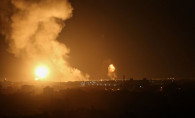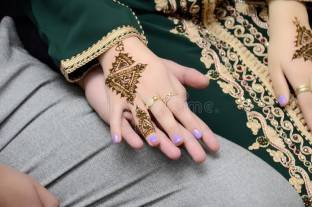Different traditions in Ramadan all over the world
Different traditions in Ramadan all over the world
Ramadan, the holiest month of the year in Islamic culture, is welcomed by Muslims every year during the ninth month of the Islamic lunar calendar. Ramadan is celebrated as a time of fasting and prayer throughout the world, and it is also known for a special set of traditions that reflect the Islamic community's solidarity.
Fasting the whole month of Ramadan is one the five pillars of Islam and mandatory for all healthy Muslims. Although peoples from different parts of the world perform the same rituals of fasting, praying, and worshiping God, there are slight differences of customs related to the culture of every country.
Indonesia
According to the Culture Trip, Muslims practice various rites to “cleanse” themselves the day before Ramadan all around Indonesia. In many locations in Central and East Java, a rite of purification known as padusan—which in the Javanese dialect means “to bathe”—is practiced. Javanese Muslims immerse themselves in springs, covering their entire bodies from head to toe.
Springs are spiritually significant and play a crucial role in the purifying process before the holy month.
Egypt
The fanous (plural fawanees), or Ramadan lanterns, are a distinctive feature of Ramadan celebrations in Egypt, despite its cultural rather than religious symbolism.
According to Ahram Online, there are many legends surrounding the history of these lanterns, one of which dates back to the Fatimid Empire. As the Egyptians received the caliph Al-Muizz li-Din Allah on the first day of Ramadan in Cairo, the military reportedly ordered them to carry candles, which they arranged in wooden frames to light up the night.
UAE
In the UAE, according to Globalization Partners International (GPI), the custom of Haq al Laila, which is comparable to trick-or-treating, is observed on Sha'ban 15—the middle of the last month before Ramadan. Children dressed in vibrant clothing stroll through their communities on this day, which is celebrated in several Gulf countries, collecting sweets and nuts in tote bags known as Kharyta while singing old-fashioned regional songs.
The song “Aatona Allah Yutikom, Bait Makkah Yudikum”, which translates from Arabic as “Give to us and Allah will reward you and help you visit the House of Allah in Mecca”, echoes through the streets as children joyfully accept their present. This ritual is recognized as a component of Emirati national identity.
Lebanon
Throughout the month of Ramadan, cannons are regularly fired in several nations throughout the Middle East to mark the completion of the day's fast. This custom, known as midfa al iftar, is thought to have started in Egypt more than 200 years ago, during the time of the Ottoman monarch Khosh Qadam, according to the Culture Trip.
The custom spread to numerous Middle Eastern nations, notably Lebanon, where the Ottomans marked iftar all around the country with cannons. After an invasion in 1983 that resulted in the removal of several of the cannons, which were then regarded as weapons, the tradition was believed to be lost. However, the Lebanese Army brought it back to life after the war, and it is being practiced today, bringing back memories of childhood Ramadans for older generations.
Morocco
A companion of the Prophet Muhammad (peace and blessings upon him) would wander the streets before dawn while singing lovely prayers, and this practice has since extended throughout the Middle East to Morocco. Similarly, Nafars wander the streets of Morocco throughout the holy month to awaken Muslims for the pre-dawn Sohour meal, much like the mesaharaty in Egypt. They each dress in the typical Moroccan garb of a gandora (a Moroccan tunic), a cap, and some slippers, according to Ahram Online.
South Africa
The appearance of the first moon crescent marks the end of Ramadan. Despite being practiced all over the world, the maan kykers—Afrikaans meaning “moon watchers”—illustrate the specialness of this ritual in South Africa.
According to the Culture Trip, Muslims from all across South Africa gather for gatherings in Cape Town, known as the “Mother City” of the country, to look for the new moon. However, only the Muslim Judicial Council of South Africa can only select the maan kykers to make an official sighting declaration. It is their responsibility to alert the Muslim community that Eid al-Fitr is approaching while seated on Signal Hill in Three Anchor Bay.
Palestine
According to Ahram Online, young Muslims continue to put up cheery flags and lights to celebrate Ramadan despite the unrest and bloodshed in parts of Palestine.
While the holy month serves to remind people of the significance of fundamental Islamic principles like generosity, sharing, collaboration, and friendliness, people's enthusiasm in charitable giving grows. Iftar food is exchanged amongst neighbors and locals.
Iraq
After breaking their fast, people from all over Iraq gather in the wee hours of the night for a customary game of mheibes. This game, which is primarily played by men during Ramadan, involves two groups of between 40 to 250 participants in each, who alternately take turns hiding a mihbes, or ring. Mheibes, a trick-taking game, starts with the team captain holding the ring while his hands are covered with a blanket.
While the leader secretly passes the ring to one of the other players, the other participants must remain seated with their fists closed. Their opponents must decipher from body language which of the dozens of men is hiding the ring in a tense exchange, the Culture Trip reported.
India
The seheriwala is a long-standing Ramadan custom in Old Delhi that honors the cultural legacy of the previous Muslim Mughal Empire (also known as zohridaar).
Throughout the holy month, seheriwalas traverse neighborhoods at 2:30 a.m. singing the names of God and the Prophet Muhammad (peace and blessing upon him) to awaken Muslims for Sohour. With canes or sticks, they bang on doors and the walls of houses. Despite the dwindling number of seheriwalas, this tradition has been passed down from one generation to the next, according to Ahram Online.







